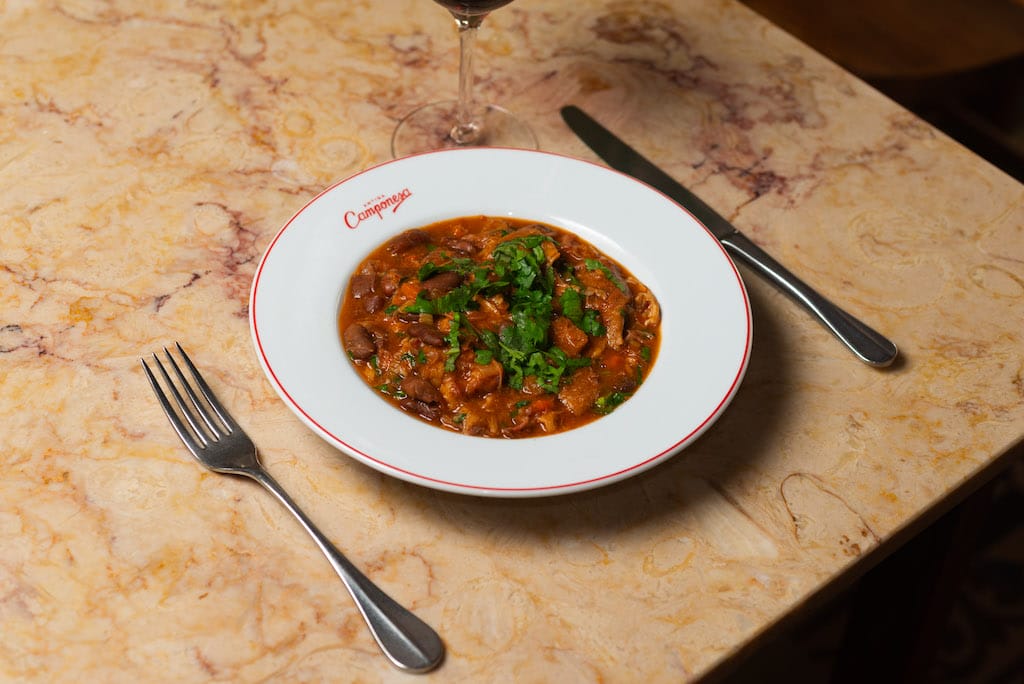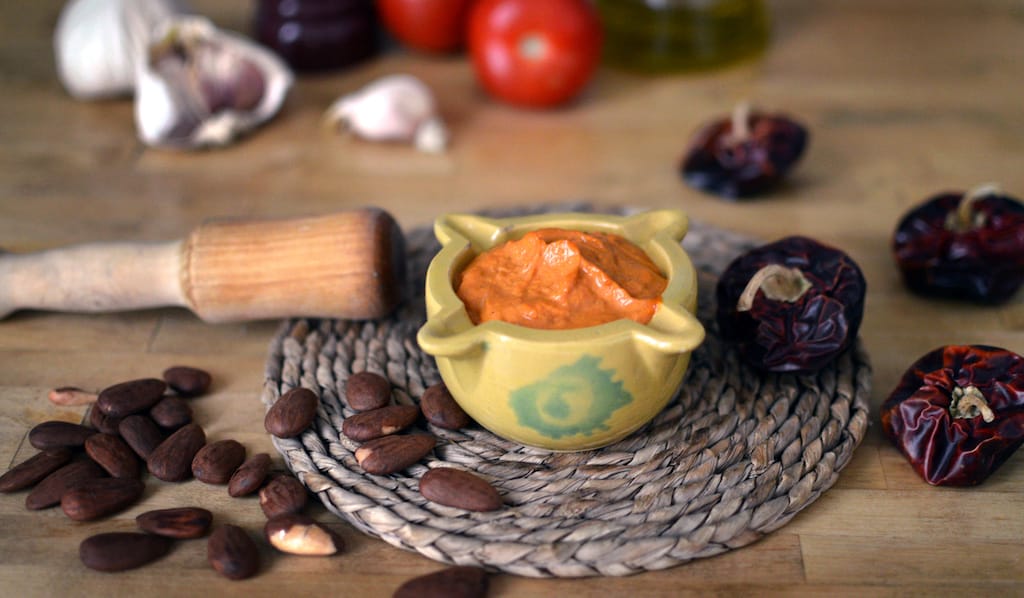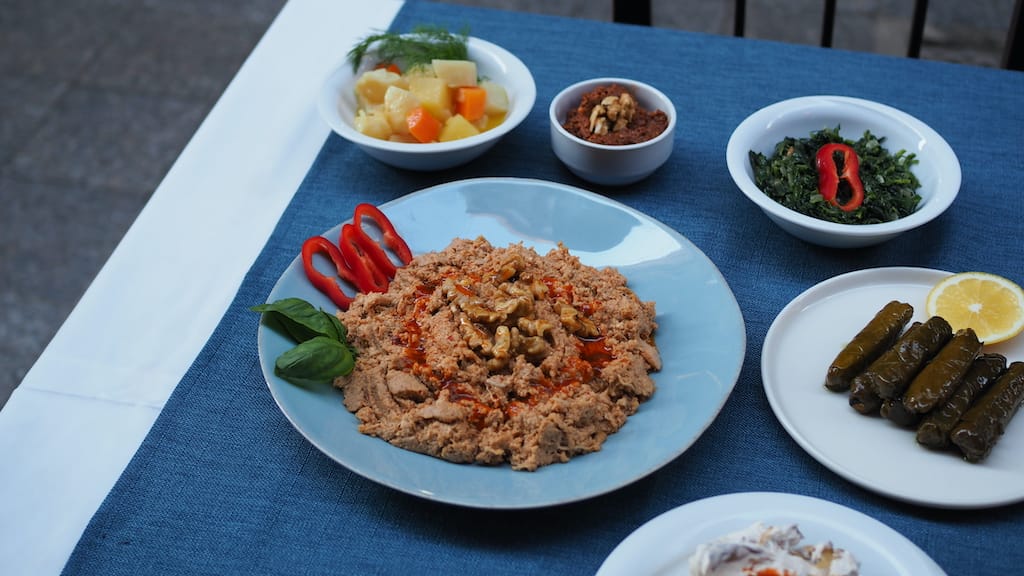“Five years ago, I started to write a cookbook about tripe,” Chef Gareth Storey tells us. “But I realized that I knew nothing about it other than how it was served in France and Italy. I needed to explore more about tripe in different parts of the world.”

It could be said that he’s conducting his research in Portugal. Gareth is originally from Ireland, but is currently the head chef of Antiga Camponesa, in Lisbon. The restaurant is overseen by André Magalhães, of Taberna da Rua das Flores fame. As such, the menu has its roots in Portugal but features occasional influences from the U.K. and Ireland, France and Italy, all places Gareth has eaten and cooked. The menu also features, when he can slot it in, tripe.
In his year in Portugal, Gareth has chased down the country’s two most famous tripe dishes: tripas à moda do Porto, the eponymous city’s dish of white beans braised with tripe and sausages, and dobrada, its Lisbon counterpart.
“I would give credit to Tasca do Gordo,” he tells us, citing the classic Lisbon restaurant – arguably the city’s most famous destination for tripe – as the reference for the dobrada that appears on the menu of Antiga Camponesa this winter.
Although a die-hard tripe fan himself, Gareth acknowledges the ingredient’s divisive nature. Yet he thinks that the Portuguese approach to tripe might be the most user-friendly.
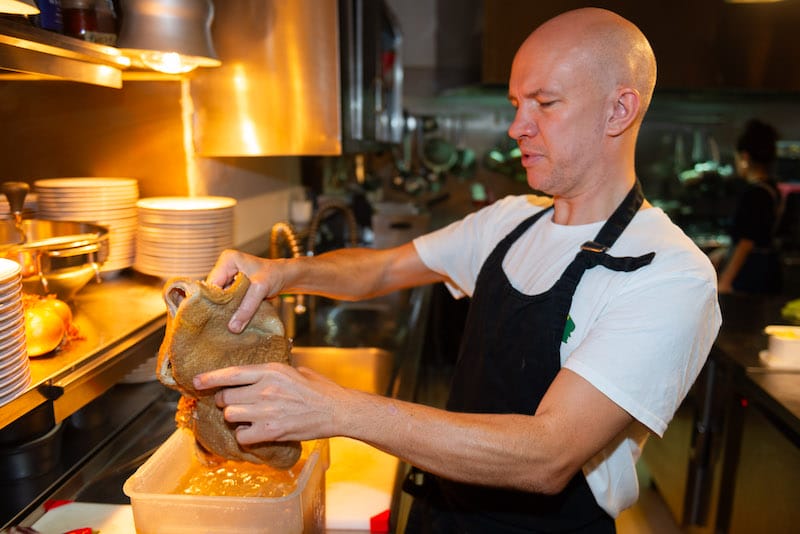
“The tripe isn’t the main ingredient,” he tells us, of dobrada, essentially a bean stew that happens to have tripe. “It’s there to add texture and flavor to the beans and sausage.”
At Antiga Camponesa, Gareth uses tripe from veal raised in Mirandela, in Portugal’s far north. He uses the so-called “honeycomb tripe,” one of the cow’s four stomachs, which has a tender texture that he reckons is ideal for stews and braises.
“For me, it’s visually pleasing as well,” he adds.
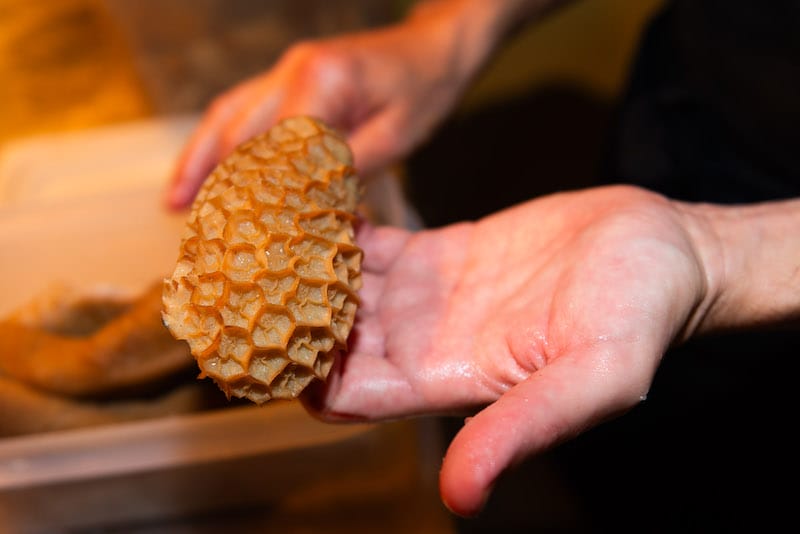
To tenderize the tripe, as well as to mitigate any unpleasant aromas, Gareth boils it a total of four times: three boils starting from scratch with cold water and salt, and a final boil with aromatics.
And rather than start with a refogado, the Portuguese base of onions, garlic, tomato and bay leaf simmered in olive oil, Gareth starts his dobrada with a mirepoix, a French base that adds celery and carrots – and in this case, smoked bacon – to the mix.
The result is a slightly more refined dobrada, one that just might possibly convert tripe skeptics.
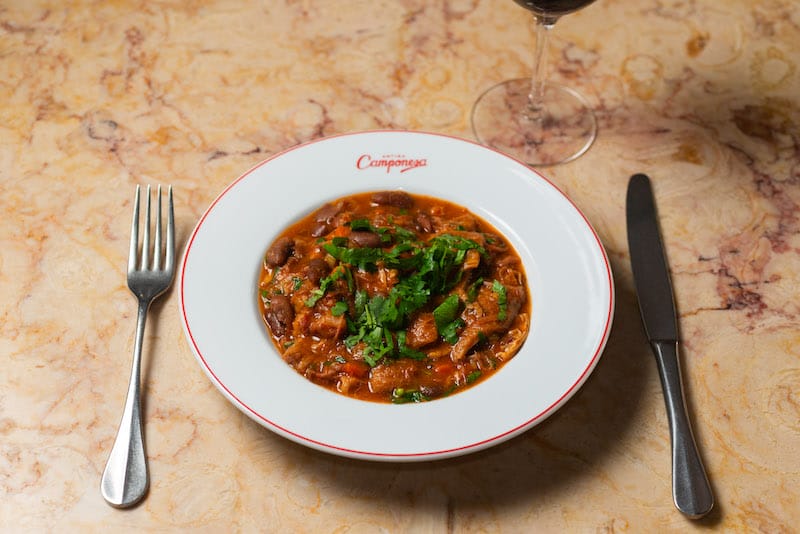
Recipe: Dobrada, White Bean and Tripe Stew
This recipe, a slightly streamlined version of the dish that Chef Gareth Storey does at Antiga Camponesa, is admittedly time-consuming, but each step can be done as many as several days in advance. Indeed, according to Gareth, the finished dish benefits from a day or two of that magic that happens in the fridge: “I wouldn’t serve this on the same day. It’s much better after.”
At Antiga Camponesa, Gareth uses different beans, but here we’ve gone with the more traditional feijão branco, or white beans. He also prefers honeycomb tripe, but any type of tripe can be used in this dish. Cooking in Lisbon, Gareth has access to a variety of Portuguese sausages, but you can use whatever is available to you; Spanish chorizo works as a rough substitute.
And at the restaurant, Gareth serves dobrada paired with rice or bread. The former is more standard in Lisbon.

For the tripe
500g honeycomb veal tripe (or other type of tripe)
2 teaspoons salt
1 bay leaf
For the beans
250g dried white beans
1/2 teaspoon salt
For the stew
1 tablespoon lard
1 small carrot (around 80g), peeled, halved lengthwise and sliced
1 stalk celery (around 50g), trimmed, halved lengthwise and sliced
1 teaspoon salt
1 onion (around 180g), peeled and chopped
1 large, fresh, mild chili (around 15g), seeded and chopped
80g smoked bacon, cubed
1 bay leaf
60ml white wine
390g skinned, chopped tomatoes
1 tablespoon tomato paste
1/4 teaspoon white pepper
1/2 farinheira (a type of Portuguese flour sausage; optional; around 100g)
1/2 chouriço (a type of spicy Portuguese sausage; optional; around 120g)
1/2 morcela (Portuguese blood sausage; optional; around 130g)
1 sprig of parsley, chopped
For serving
Bread or rice
Chili oil (optional)
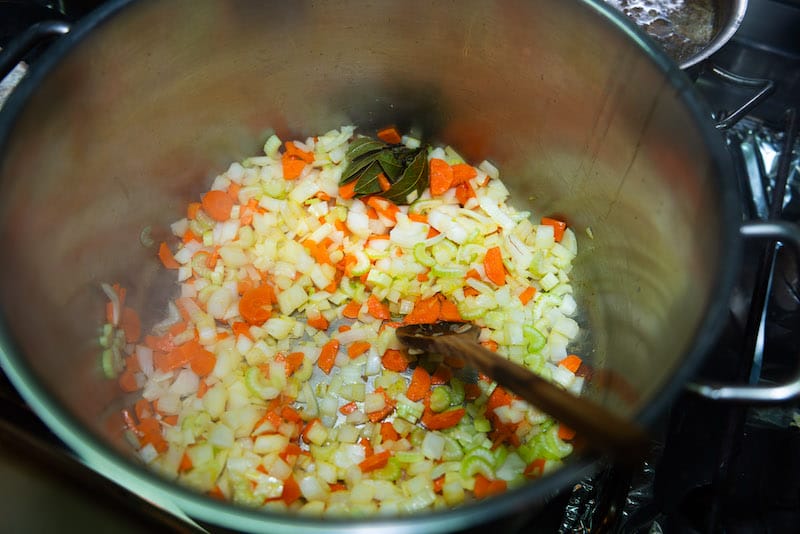
Prepare the tripe: Up to a few days in advance, in a stockpot, combine the tripe, 1/2 teaspoon of the salt and enough water to cover the tripe by a couple centimeters. Over high heat, bring the water to the boil. Remove the saucepan from the heat and discard the water, retaining the tripe. Repeat this step two more times, for a total of three times. Refrigerate until ready to prepare the rest of the dish.
In the stockpot, combine the tripe along with aromatic kitchen scraps from the next step in this recipe – onion skins, carrot peels and off-cuts, parsley stems, celery off-cuts – bay leaf, 1/2 teaspoon of salt and enough water to cover by a couple centimeters. Over high heat, bring the water to the boil, reduce heat, cover the stockpot and simmer until the tripe is tender enough to slice through easily with a knife, around 2 hours. Drain, discarding the aromatics, and retain 1 liter of the liquid. When the tripe is cool enough to handle, cut into 2cm by 3cm pieces. Set aside.
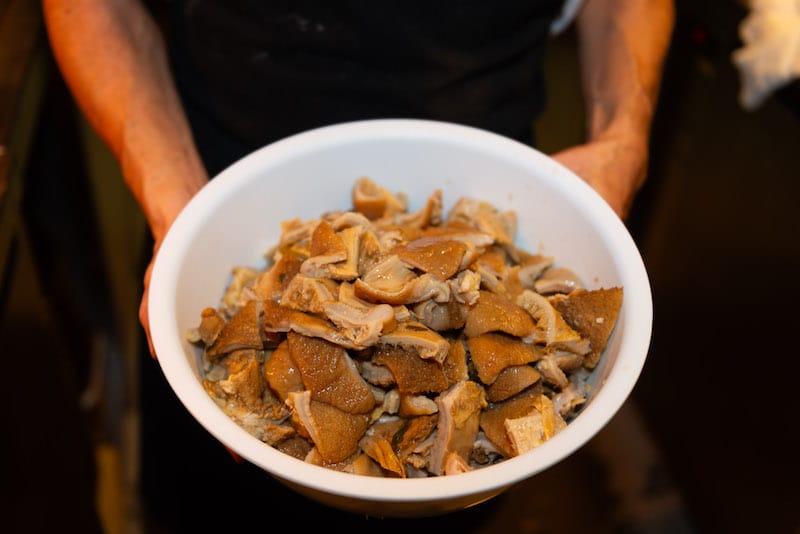
Prepare the beans: Up to a few days in advance, in a stockpot, combine the beans, salt and enough water to cover by 5 centimeters. Over high heat, bring the water to the boil, reduce heat, cover the stockpot and simmer until the beans are tender, around 1 hour. Strain and discard the cooking liquid, retaining the beans.
Prepare the dish: Up to a few days in advance, melt the lard over medium-low heat in a stockpot. Add the carrots, celery and salt, stirring occasionally until just soft, around 2 minutes. Add the onions, smoked bacon, chili and bay leaf, stirring occasionally until the onion is just soft and the smoked bacon is starting to render, around 5 minutes. Add white wine, stirring to combine. Add the canned tomatoes, tomato paste and the white pepper, stirring to combine. Add the sausages, the reserved tripe, and the reserved cooking liquid. Increase heat to high, bring to a boil, reduce heat, cover and simmer for an hour.
Remove the sausages (typically the farinheira will have “melted” into the broth). When cool enough to handle, slice. Add the sausages and the reserved beans to the stew. Simmer for another 30 minutes.
Remove to a serving dish, garnish with parsley and serve, hot, with rice or bread.
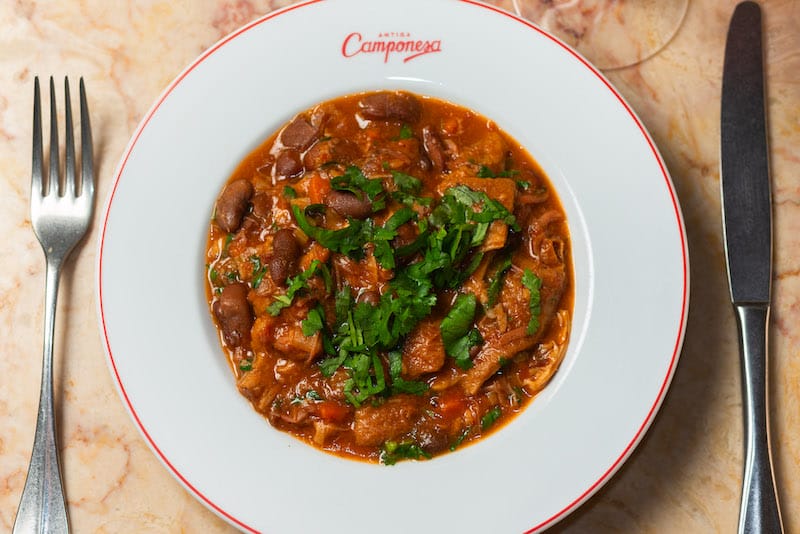
 April 2, 2024 Grandma’s Folar Recipe
April 2, 2024 Grandma’s Folar Recipe
Folar is the generic name given to traditional Easter sweet bread in Portugal. Making it […] Posted in Lisbon March 20, 2024 Recipe
March 20, 2024 Recipe
Served as a sauce, romesco is certainly striking: It has an intense dark orange color […] Posted in Barcelona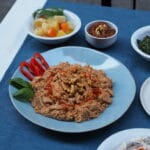 February 16, 2024 Recipe
February 16, 2024 Recipe
Some recipes are so deeply connected with the region from which they originate that they […] Posted in Istanbul
Austin BushAustin Bush
Published on February 12, 2024
Related stories
April 2, 2024
LisbonFolar is the generic name given to traditional Easter sweet bread in Portugal. Making it from scratch is somewhat of a long process, but being confined due to the coronavirus crisis, we seem to have a bit more time on our hands than expected. My family’s folar recipe is from my grandmother Felismina, who was…
March 20, 2024
BarcelonaServed as a sauce, romesco is certainly striking: It has an intense dark orange color and a dense texture that saturates and blankets whatever you dip in it. Once in the mouth, you get a piquant touch of vinegar, which is soon enveloped by the nutty creaminess of ground almonds (or perhaps hazelnuts) and olive…
February 16, 2024
Istanbul | By Lian Penso Benbasat
IstanbulSome recipes are so deeply connected with the region from which they originate that they are simply named after that place. Circassian chicken, an appetizer beloved in Turkey and throughout the Caucasus, is such a dish. The recipe itself takes on many different variations across different geographical locations, much like the mosaic of people and…







































